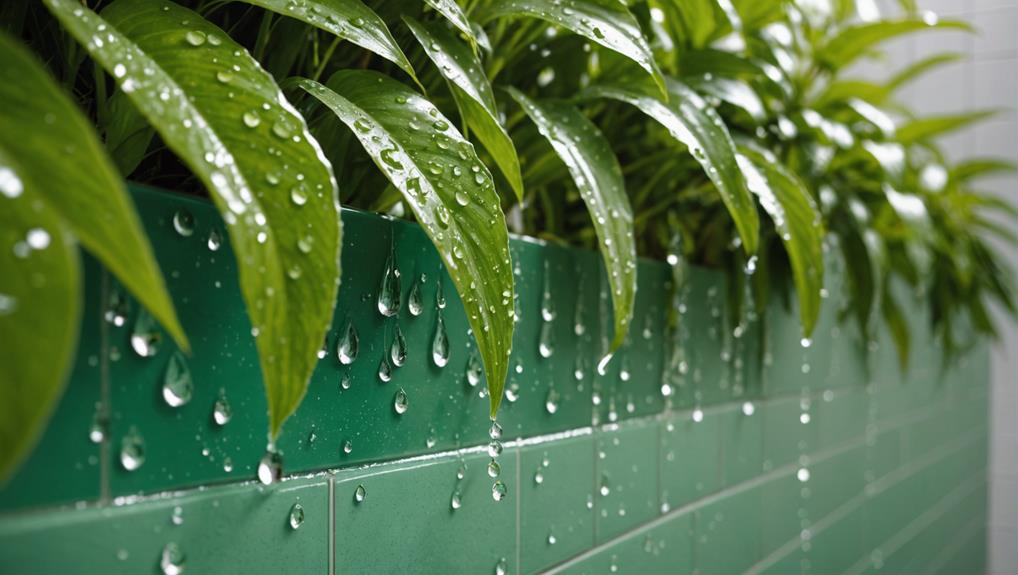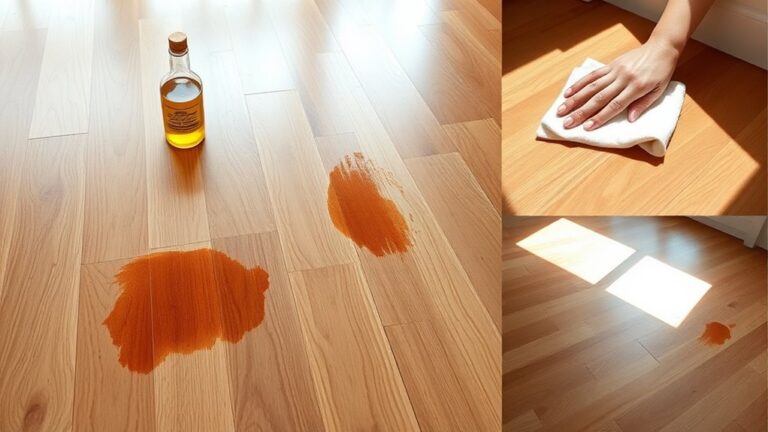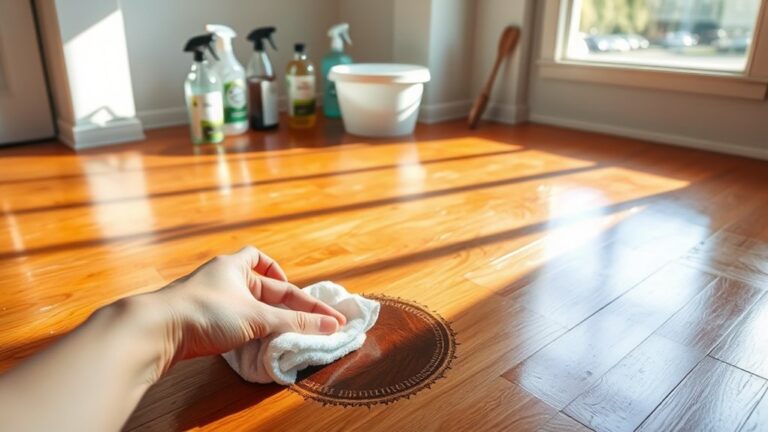When choosing protective coatings for high-moisture areas, focus on moisture resistance and durability. Epoxy and polyurethane coatings are excellent options, offering strong adhesion and chemical resistance. Proper surface preparation is vital; clean and dry surfaces guarantee effective bonding. Additionally, consider application methods—spray, brush, or roller—depending on the project's scale. Always factor in long-term maintenance, as regular inspections can prevent mold growth. Be aware of environmental conditions during application to avoid performance issues. This careful selection process not only protects your investment but also enhances safety and longevity, so there's much more to uncover on this topic.
Understanding High-Moisture Environments
When you're working in high-moisture environments, it's vital to recognize the unique challenges they present. The primary concern in these settings is the humidity impact on materials and structures. High humidity can accelerate corrosion, mold growth, and degradation of protective coatings, leading to costly repairs and safety hazards. Identifying moisture sources—such as leaks, condensation, and high outdoor humidity—is fundamental for effective management.
You should conduct regular assessments to monitor humidity levels and identify moisture sources. Utilize hygrometers or moisture meters to quantify relative humidity and material moisture content. Understanding these factors allows you to implement appropriate control measures, such as dehumidification systems or improved ventilation.
It's also important to take into account the effects of temperature fluctuations, as they can exacerbate moisture issues. When temperatures drop, condensation can form on surfaces, further compromising material integrity. By maintaining stable temperatures and humidity levels, you can mitigate potential damage.
In addition, moisture can seep through walls and floors, particularly in basements or areas prone to flooding. Waterproofing techniques and barriers can help reduce exposure to these moisture sources.
Types of Protective Coatings
When selecting protective coatings, understanding the types available is essential. Epoxy coatings offer strong adhesion and chemical resistance, making them ideal for high-moisture environments. On the other hand, polyurethane coatings provide excellent flexibility and UV resistance, which can enhance durability in various applications.
Epoxy Coatings Overview
Epoxy coatings stand out among protective coatings due to their exceptional adhesion, chemical resistance, and durability. When you're considering a coating for high-moisture areas, epoxy formulation types are essential. These formulations can vary considerably, including solvent-based, water-based, and 100% solids epoxies. Each type offers distinct advantages, depending on your specific application needs.
Understanding epoxy curing processes is equally important. Most epoxies cure through a chemical reaction between a resin and hardener. This process can occur at room temperature or be accelerated with heat, achieving peak performance quickly. The choice of curing method affects the final properties of the coating, including hardness, resistance to moisture, and overall longevity.
For safety, confirm that the selected epoxy coating meets your environmental and health standards. Many modern formulations are designed to minimize volatile organic compounds (VOCs), reducing harmful emissions during application. By choosing the right epoxy formulation and curing process, you'll enhance the protective qualities of your coating, making sure it withstands the challenges posed by high-moisture environments while keeping safety a top priority.
Polyurethane Coatings Benefits
Polyurethane coatings offer a range of benefits that make them a popular choice for various protective applications. One of the primary advantages is their exceptional durability factors. They resist abrasion, chemicals, and moisture, making them ideal for high-moisture areas where other coatings might fail. You'll find that they maintain their integrity even under harsh conditions, ensuring long-lasting protection.
The application processes for polyurethane coatings are also straightforward, which can minimize downtime. They can be spray-applied, rolled, or brushed on, depending on your specific needs. This versatility allows you to choose the method that best suits your project requirements.
Additionally, polyurethane coatings offer excellent flexibility, which means they can expand and contract with temperature changes without cracking. This property is vital in environments with fluctuating temperatures, as it enhances the longevity of the coating.
Moreover, these coatings provide a smooth finish that's easy to clean, promoting hygiene in areas where cleanliness is paramount. Overall, the benefits of polyurethane coatings make them an excellent investment for enhancing safety and protection in high-moisture environments.
Key Features to Consider
When selecting protective coatings, it's crucial to evaluate moisture resistance levels to guarantee long-lasting performance in various environments. Additionally, understanding the surface preparation requirements can greatly impact the effectiveness of the coating application. By considering these key features, you'll be better equipped to make informed decisions for your projects.
Moisture Resistance Levels
Moisture resistance levels are critical factors that can greatly impact the longevity and performance of protective coatings. When selecting a coating for high-moisture areas, you must understand how different materials respond to moisture exposure. Start by looking at the established resistance standards, which provide guidelines on the minimum performance you should expect from a coating.
Conducting moisture testing is essential to evaluate a coating's ability to withstand humidity, water penetration, and condensation. These tests measure the coating's adhesion and durability under various moisture conditions, ensuring it meets the safety and performance requirements for your specific application.
Consider the environment where the coating will be applied. For instance, areas that experience frequent water contact or high humidity need coatings with higher moisture resistance levels to prevent mold, mildew, and deterioration.
Always consult product datasheets and technical specifications to confirm that the chosen coating aligns with the necessary resistance standards for your project. By prioritizing moisture resistance levels, you'll be making a proactive choice to enhance the safety and lifespan of your protective coatings.
Surface Preparation Requirements
Before applying any protective coating, proper surface preparation is vital to confirm ideal adhesion and performance. Start with a thorough substrate assessment to identify any existing issues, such as moisture damage, contamination, or surface irregularities. This assessment will help determine the necessary cleaning methods and repairs needed prior to coating application.
Conduct surface cleaning to remove all contaminants, including dirt, grease, mold, and old coatings. Depending on the substrate and level of contamination, you might need to use pressure washing, scrubbing, or chemical cleaners. Confirm the surface is completely dry before proceeding, as residual moisture can compromise adhesion.
After cleaning, inspect the substrate again for any cracks or imperfections. Repair these areas with suitable fillers or sealants to create a uniform surface. This step is essential, as any flaws can lead to coating failure, especially in high-moisture environments.
Benefits of Moisture-Resistant Coatings
While the potential for water damage looms large in many environments, moisture-resistant coatings offer a essential line of defense. These coatings are specifically formulated to withstand high humidity and moisture exposure, ensuring that your surfaces remain protected over time. By utilizing moisture-resistant options, you greatly enhance coating durability, which is key for maintaining the integrity of your structures in challenging application environments.
One of the primary benefits of moisture-resistant coatings is their ability to prevent water infiltration. This not only protects the underlying materials but also reduces the risk of mold and mildew growth, which can pose serious health risks. Additionally, these coatings often exhibit superior adhesion properties, ensuring they remain intact even when exposed to fluctuating moisture levels.
In the long run, investing in moisture-resistant coatings translates to reduced maintenance costs. Since these coatings are designed to endure harsh conditions, you'll find that the frequency of repairs or replacements is minimized. This longevity is particularly important in environments such as bathrooms, kitchens, and exterior surfaces that face constant moisture exposure.
Furthermore, many moisture-resistant coatings are formulated with antimicrobial properties, providing an extra layer of protection against potential health hazards. This feature is especially beneficial in residential and commercial spaces where hygiene is paramount. By choosing moisture-resistant coatings, you're not just protecting your investments; you're also ensuring a safer and healthier environment for everyone.
Application Methods and Techniques
When applying protective coatings, understanding the various methods and techniques is fundamental for achieving best results. Your choice of application techniques will greatly impact the durability and performance of coatings, especially in high-moisture areas. Spray methods can provide a smooth, even finish and are ideal for larger surfaces. However, make sure you're using appropriate protective gear, as overspray can pose health risks.
Brush application offers more control and is effective for detailed work or smaller areas. When using a brush, consider the type of bristles to guarantee proper adhesion and coverage. Roller usage is another viable option, particularly for larger flat surfaces, allowing for faster application while maintaining an even texture.
Surface priming is essential; it enhances adhesion and guarantees a robust bond between the coating and substrate. Pay attention to curing processes, as they affect the coating's final strength and moisture resistance. Proper environmental factors, such as temperature and humidity, should be monitored to guarantee ideal application conditions.
Texture considerations are also critical; a textured surface can help improve adhesion but may complicate cleaning. Layering strategies should be employed to achieve the desired thickness and performance characteristics, allowing each layer to cure adequately before applying the next. Finally, using proper adhesion techniques, like selecting compatible primers and coatings, can greatly enhance the longevity of your protective layers. By following these guidelines, you can guarantee a successful application in high-moisture environments.
Errores comunes que se deben evitar
One of the most notable pitfalls in applying protective coatings is neglecting surface preparation. If you skip this critical step, you're setting yourself up for failure. Proper surface preparation guarantees that the coating adheres correctly, preventing peeling or flaking, especially in high-moisture areas. A common misconception is that a quick clean is sufficient; however, contaminants like oils, dirt, and moisture must be thoroughly removed.
Another prevalent mistake involves misjudging environmental conditions. Many overlook the temperature and humidity levels during application, which can adversely affect the coating's performance. High humidity can lead to improper curing, while low temperatures may slow down drying times considerably. Always check the manufacturer's guidelines for ideal application conditions.
Application errors also stem from using the incorrect tools or methods. Some may mistakenly believe that a brush or roller will suffice for all coatings. In reality, certain coatings require specific application techniques to guarantee uniform coverage and durability.
Consejos de mantenimiento para una mayor longevidad
Proper maintenance is essential for guaranteeing the longevity of protective coatings. To achieve ideal results, it's vital to conduct routine inspections and address any issues promptly. By keeping an eye on the coatings, you can identify early signs of wear, such as discoloration or peeling, which may indicate underlying problems.
Additionally, consider the environmental factors that may affect the coatings. High humidity and temperature fluctuations can accelerate degradation. Therefore, it's advisable to schedule maintenance checks during seasonal changes. Here are some key maintenance steps to follow:
| Tarea de mantenimiento | Frecuencia |
|---|---|
| Inspecciones de rutina | Mensual |
| Limpieza profunda | Quarterly |
| Touch-Up Repairs | As Needed |
Regular cleaning helps prevent mold and mildew buildup, which can compromise protective coatings. Use mild detergents and avoid abrasive materials that can scratch the surface. If you notice any damage during your inspections, address it immediately. Touch-up repairs can greatly extend the lifespan of coatings and maintain their protective qualities.
Lastly, always refer to the manufacturer's guidelines for specific maintenance recommendations tailored to your chosen coating. By adhering to these practices and remaining vigilant about environmental influences, you can guarantee that your protective coatings remain effective and safe for years to come.
Consideraciones de costos
Taking into account the various factors that influence the cost of protective coatings is vital for making informed decisions. When evaluating options, it's essential to balance quality with affordability, especially in high-moisture areas where durability is paramount. Start by reviewing your budget constraints—these will guide your choices. While it might be tempting to opt for the cheapest solution, weigh the potential long-term savings associated with higher-quality coatings.
Investing in superior protective coatings may involve a higher upfront cost, but these products often provide better resistance to moisture, mold, and mildew. This means fewer maintenance requirements and the need for less frequent reapplication, ultimately saving you money over time. High-quality coatings can also enhance the longevity of the surfaces they protect, reducing the risk of structural damage and the associated repair costs.
Moreover, factor in the labor costs involved in application. Some coatings may require professional installation, which can add to your overall expenditure. However, selecting a coating that's easier to apply can mitigate these costs.
Don't forget to examine warranty options as well. A robust warranty can serve as an indicator of the manufacturer's confidence in their product and provide you with additional peace of mind. By looking at both immediate expenses and future savings, you'll be better equipped to make a decision that protects your investment and guarantees safety in high-moisture environments.
Popular Brands and Products
After establishing a budget and understanding the cost implications of protective coatings, it's crucial to explore popular brands and products in the market. Selecting the right product can greatly impact the durability and effectiveness of your application, especially in high-moisture areas.
Brands like Rust-Oleum and Zinsser are widely recognized for their reliable protective coatings. Rust-Oleum's "EpoxyShield" provides excellent moisture resistance, making it ideal for garages and basements. Zinsser's "Perma-White" is another strong contender, known for its mold and mildew-resistant properties, perfect for bathrooms and kitchens.
When considering brand comparisons, it's important to look at the specific needs of your environment. For instance, while both brands offer durability, Rust-Oleum may excel in heavy-duty applications, whereas Zinsser is often favored for its ease of application and quick drying times.
Product reviews can also give you valuable insights into the performance of these coatings. Many consumers highlight the ease of cleaning with Zinsser's finish, while others praise the robustness of Rust-Oleum's epoxy.
In high-moisture areas, you should focus on coatings that are specifically designed to combat humidity and prevent mold growth. Always look for certifications or endorsements from safety organizations to guarantee you're making a wise choice. By comparing brands and carefully reviewing product specifications, you'll be well-equipped to choose a protective coating that meets your safety and durability requirements.
Preguntas frecuentes
How Do I Test Moisture Levels Before Applying Coatings?
To test moisture levels before applying coatings, you can use moisture measurement techniques like a moisture meter or a calcium chloride test. These methods help you determine if the substrate is suitable for coating. It's essential to guarantee proper substrate preparation; any residual moisture can lead to coating failure. By accurately measuring moisture content, you can enhance the longevity and effectiveness of your protective coatings, ensuring a safer, more durable finish.
Can Protective Coatings Be Applied Indoors and Outdoors?
Did you know that approximately 70% of coating failures occur due to improper application conditions? When it comes to protective coatings, yes, they can be applied both indoors and outdoors. For indoor applications, guarantee proper ventilation and humidity control, while outdoor applications require consideration of weather conditions and UV exposure. Selecting the right coating for each environment is essential for durability and safety, minimizing risks associated with moisture and environmental factors.
What Is the Drying Time for Moisture-Resistant Coatings?
The drying time for moisture-resistant coatings can vary considerably based on drying conditions and application techniques. Typically, you can expect initial drying to occur within 1-2 hours, but full curing may take several days. Make sure the environment is well-ventilated and at the recommended temperature for best results. Always follow the manufacturer's guidelines for specific products, as differing formulations may have unique drying requirements that could impact safety and performance.
Are There Eco-Friendly Options for Protective Coatings?
When considering eco-friendly options for protective coatings, you'll find a range of biodegradable options and sustainable materials. These alternatives not only minimize environmental impact but also guarantee safety in application. While traditional coatings might offer durability, eco-friendly choices often provide similar protection without harmful chemicals. It's crucial to assess their performance in your specific setting, making sure you achieve both safety and sustainability in your protective coating decisions.
How Often Should I Reapply Protective Coatings in High-Moisture Areas?
You should reapply protective coatings based on application frequency, typically every 1 to 3 years. However, environmental factors like humidity, temperature fluctuations, and exposure to water can greatly impact this timeline. Regular inspections will help determine if the coating has degraded or lost effectiveness. If you notice signs of wear, it's best to reapply sooner to maintain safety and protect surfaces from moisture-related damage. Always follow manufacturer guidelines for best results.




